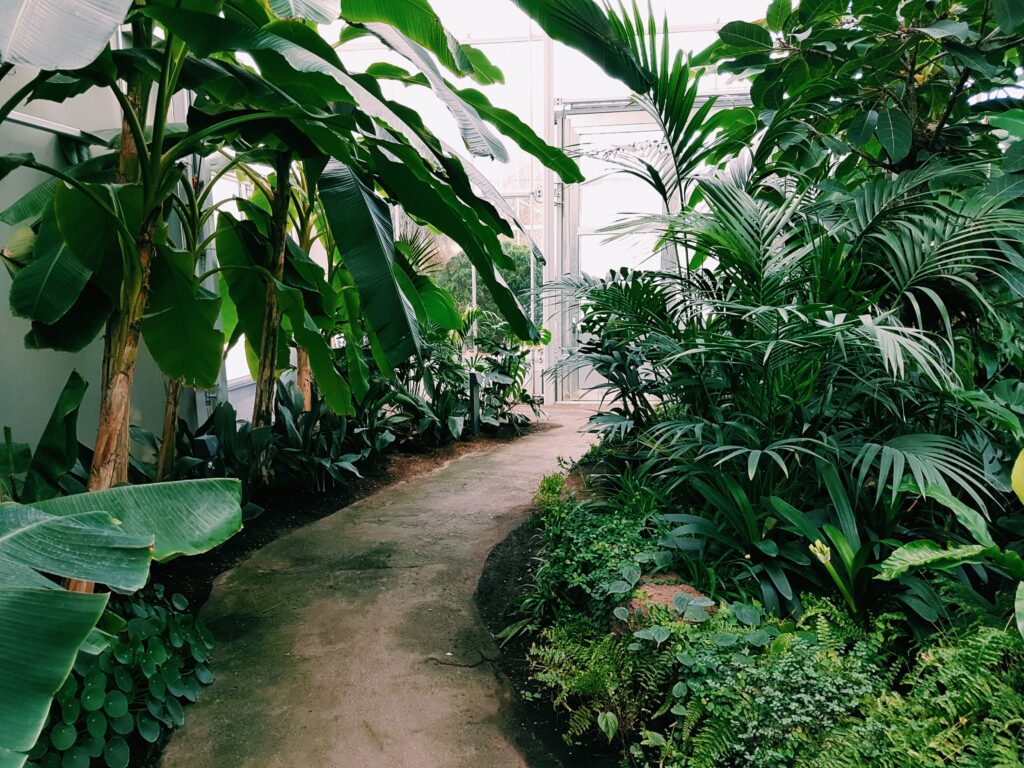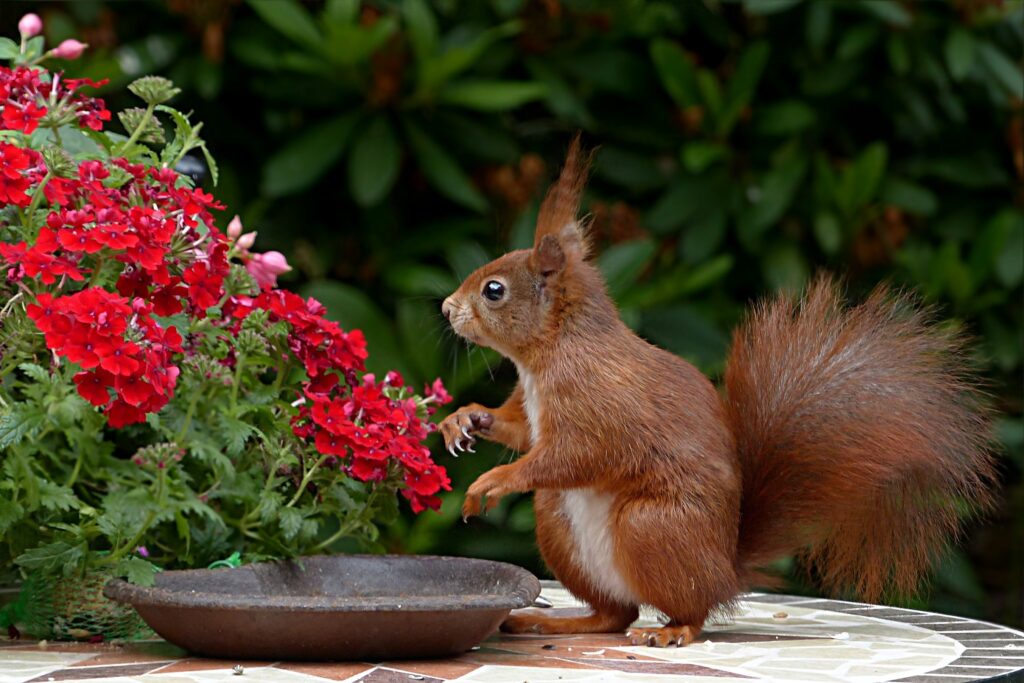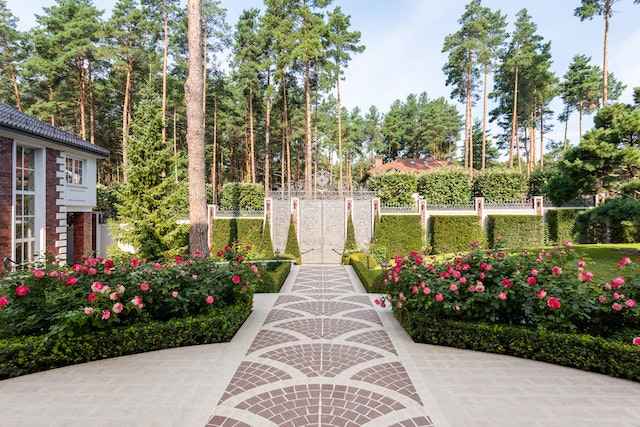Are you looking for ways to make your outdoor space a source of year-round beauty and pleasure? Whether you’re just starting out in the world of garden design or have been tinkering in the dirt for years, creating an outdoor space that transitions from summer vibrancy to winter serenity is within reach.
In this blog post, we’ll discuss landscaping ideas and plant choices that will bring colour, texture and function to your garden throughout all four seasons while staying true to a personal touch. Get ready to learn how easy it can be to take your gardening goals – no matter what time of year it is – into full bloom!
Why Garden Design Matters
Gardening is one of the most soothing activities that can be enjoyed by people of all ages and backgrounds. It combines art, science, and nature to create a beautiful backdrop for urban and suburban living. However, garden design is much more than merely making something look aesthetically pleasing – it has an important impact on the surrounding environment as well. By creating gardens with locally sourced plants, we are able to help reduce erosion, draw in helpful pollinators, conserve rainwater runoff, improve air quality, and contribute to local habitat conservation efforts.
Even small gardens have a powerful capacity to promote biodiversity and provide habitats for many species of birds, insects, and other local wildlife. Garden design truly matters – both in terms of its immediate benefits as well as its long-term effects on our planet’s health.

Environmental Factors to Consider
As gardeners, we are responsible for taking the environment into consideration when making decisions about our gardens. This could include anything from selecting plants that can grow in certain soil conditions, to controlling weeds without the use of chemical pesticides, to managing the amount of sunlight and water that our plants receive.
As a gardener, it’s essential to be aware of the importance of chemicals for keeping weeds and pests away from important plants. However, if used incorrectly or in excessive amounts, these same chemicals can have an incredibly negative impact on our environment. Pesticides have been linked to the destruction of beneficial insects which can disrupt local ecosystems and decrease biodiversity.
Furthermore, runoff from fertiliser and other chemicals used in gardening can cause hazardous algal blooms that are toxic to humans, fish and other wildlife in nearby bodies of water. Chemicals should be used sparingly as part of an integrated approach to gardening so that we can protect our environment for future generations.
Additionally, if we’re going to be composting on-site, it’s important to remember not to over-fertilise or disturb the natural biological makeup of the soil in order to preserve its health. Dedicating a little extra time will ensure that your garden is not only beautiful but also respects and preserves the environment around it.

Planning Your Garden Design
Planning your garden design is an exciting and rewarding process. It needs careful consideration of all the elements to ensure your garden becomes the place of beauty, relaxation and sanctuary that you desire. Consider the various spaces in your garden and decide if they are more suited for flowers, vegetables or a combination of both. Weigh up the pros and cons of shade-loving plants compared with sun-loving varieties, as well as retaining walls, ponds and pergolas.
Take guidance from professionals for plants and consider the electrical set-up but ultimately incorporate the elements you love most into your unique plan. With careful planning, your outdoor space will become an extension of your home filled with colours, fragrances and interesting features to enjoy for many years to come.
Decide on Your Garden’s Purpose
Gardening can provide a number of benefits to individuals, from personal satisfaction to major lifestyle changes. Deciding on your garden’s purpose is an important first step in the gardening process since it will help you understand what kind of supplies and maintenance will be necessary for success.

The main purpose of considering when starting out is whether you want a garden specifically for fresh produce or whether you want the beauty and greenery of ornamental plants. Additionally, some prefer a mix of both while others are looking for a more meaningful approach, focusing on healing herbs, medicinal remedies, native plants or even providing space for wildlife. No matter what type of garden you create it will ensure that precious time spent within its realm brings joy, knowledge, and nourishment each time you step away.
Choosing Plants for All Seasons
Choosing plants for all seasons is a great way to bring joy and life to your outdoor space year-round. With the right combination of plants, you can enjoy blooms throughout spring and summer, an autumn harvest and even colour in the winter. While some plants are more seasonal than others, there are some plants that will thrive in multiple seasons.
Perennials and shrubs provide a base layer of greenery throughout the year while annuals such as marigolds can be planted seasonally for a pop of colour in warmer weather. Evergreens and deciduous trees will keep your garden looking lively no matter what side of fall or spring you come into, plus they offer shelter from the sun and vibrant fruits or berries in many cases. For any gardener wanting to inject their outdoor space with all of nature’s beauty, planting for all seasons is definitely the way to go!
Creating a Focal Point
Making a focal point in your garden is a great way to highlight its most impressive feature. Whether it be a piece of art, an exquisite boulder, or an elegant water feature, finding the right point of view can be the difference between making a first impression on your visitors or leaving them feeling lost and unsure.
Plan out how you want others to experience your garden by developing an engaging path that leads to the focal point, such as winding walkways and thoughtful pathways. Your chosen focal point should draw attention without overpowering its surroundings, unifying the garden rather than taking it away from it. It should stimulate conversation and provide an opportunity for us to appreciate its beauty.
Incorporating Water Features
Water features are a great addition to any outdoor space, providing a soothing and calming atmosphere. From small fountains to ponds and streams, the use of water can add a serene element to your garden. The sound of running water can also help mask unwanted sounds, creating a tranquil environment.
Incorporating water features into your landscape design can be a fun and creative process, allowing you to express your personal style. Whether you opt for a minimalist design or a more elaborate setup, the possibilities are endless. Imagine enjoying the peacefulness of your very own oasis, complete with the gentle sound of flowing water. With a little bit of planning and creativity, your outdoor space can become a haven of relaxation and serenity.
Garden Lighting Matters
As any gardener knows, the work doesn’t stop when the sun goes down. In fact, some of the most memorable and peaceful moments in a garden can happen at night. For this reason, lighting should be a key consideration in any garden design.

Not only does it highlight the beauty of your plants and landscaping features, but it also adds an element of safety and security to your outdoor space. When it comes to selecting garden lighting, there are a variety of options available to suit your style and budget. From soft ambient lighting to dramatic spotlights, the right lights can truly make all the difference in creating a beautiful and functional outdoor oasis.
Garden Pathways and Edging
Garden pathways and edging are the unsung heroes of outdoor landscaping. They provide structure and definition to a garden, while also creating a sense of intrigue and exploration. Without carefully planned pathways, a garden can feel disjointed and confusing, whereas effective edging can help keep weeds at bay and prevent erosion.
Whether you prefer a winding stone path or a more modern concrete walkway, the options for garden pathways are endless. And with a variety of materials available for edging, from classic brick to eco-friendly recycled plastic, you can create a garden that is both beautiful and sustainable. With the right pathways and edging, your garden can become a true work of art, a place of serenity and reflection, and a space that you can be proud to show off to the world.
Furniture and Decor
Imagine a warm summer evening, birds chirping, and the sun setting as you relax in your garden, surrounded by beautiful plants and flowers. Now, picture adding a 2 to 3-person hot tub to that scene. It’s the perfect way to unwind after a long day at work or a fun-filled day of outdoor activities.
With garden furniture and decor, you can turn your outdoor space into a private oasis to entertain guests, spend quality time with your family and loved ones, or simply enjoy time alone. From comfortable outdoor sofas to stunning decorative accents, there’s an extensive range of options to choose from to elevate your garden space to the next level. So, why not create your own haven where you can relax, recharge and enjoy the beauty of nature?
Maintaining Your Garden Design
Maintaining your garden design can be a fulfilling and rewarding experience, but it can also be a lot of work. From pruning to weeding to watering, there are plenty of tasks that need to be done regularly to keep your garden looking its best. However, with a little bit of planning and some dedication, you can easily manage your garden and create a beautiful outdoor space that you can be proud of. Start by identifying the specific needs of your plants and design a maintenance schedule that works for you.

Whether you have a small balcony or a large backyard, there’s always something you can do to keep your garden in top shape. Remember, a well-maintained garden not only looks great but also benefits your overall well-being by providing a peaceful place to relax and enjoy nature.
Tips for Designing a Garden in a Small Space
Designing a garden in a small space can be a challenging task, but it’s not impossible. The key is to be strategic with your choices and focus on maximising the potential of the space that you have. Consider using vertical space with trellises or wall planters, and choose plants that are compact and grow well in containers.
Grouping plants together in clusters can also create the illusion of a larger garden. Don’t forget to add decorative elements such as statues, bird feeders, or colourful garden stones to add interest to your space. With a little creativity and planning, you can create a beautiful oasis in even the smallest of gardens.
Conclusion
In conclusion, designing a garden is not only a fun and rewarding way to enjoy the outdoors, but can also be a meaningful and creative process. There are many different elements to consider when designing an all-season garden, from choosing the right plants and flowers to finding the perfect spot for your furniture.
Whether you want to create an elaborate setup or just add a few touches of greenery here and there, with careful planning and consideration, you can ensure that your garden will be enjoyed for many months of the year. An all-season garden does not have to be complex – even small efforts towards perfecting your outdoor space can make a big difference in how much you enjoy it. With some effort and dedication, you’ll soon find yourself surrounded by lush foliage, vibrant colours, and fresh scents at all times! So why wait? Now is the time to get started on crafting your own beautiful outdoor oasis!









